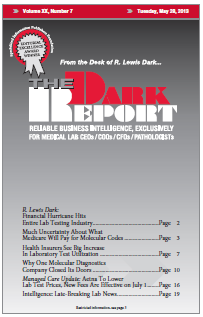CEO SUMMARY: When executives closed the doors of Pathwork Diagnostics last month, the simple explanation was that reimbursement for its proprietary molecular diagnostic test was inadequate. Indeed, that was part of the story. But other factors played significant roles in impeding growth at this lab company. Here is an inside look at six factors which …
Why One Molecular Diagnostics Company Closed Its Doors Read More »
To access this post, you must purchase The Dark Report.


